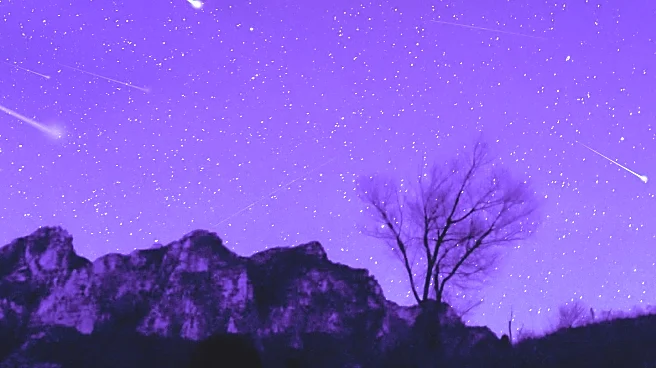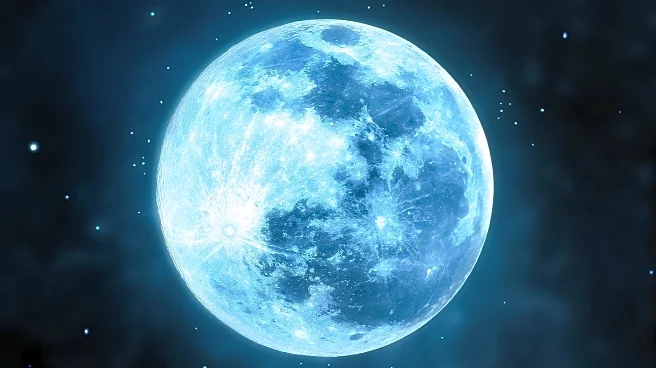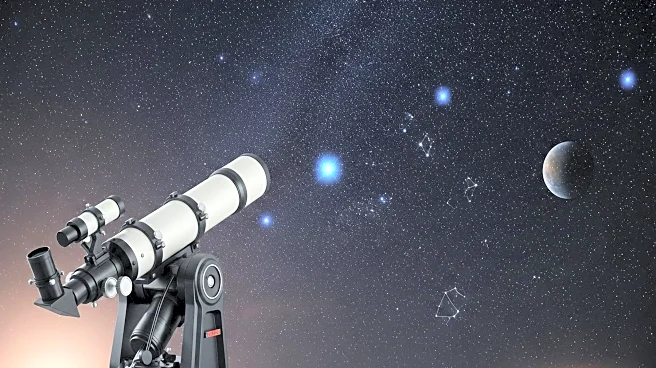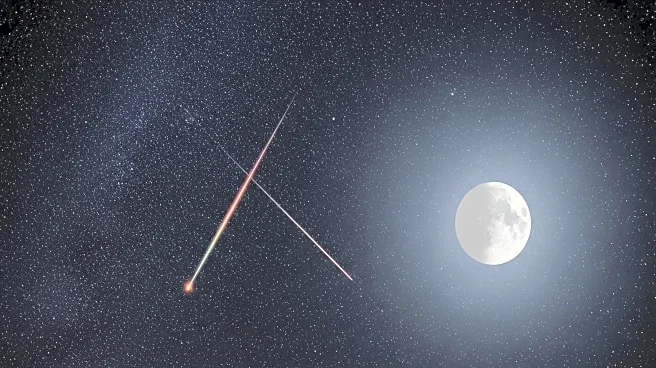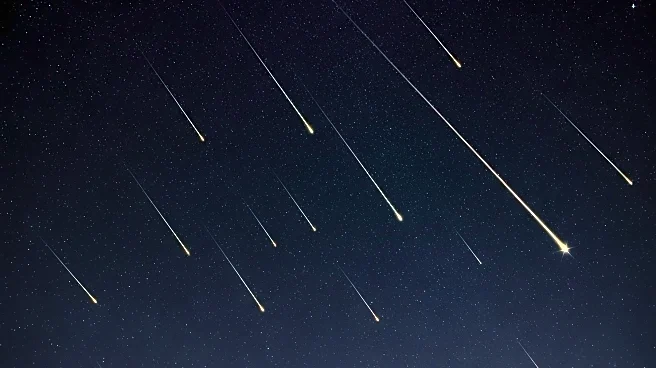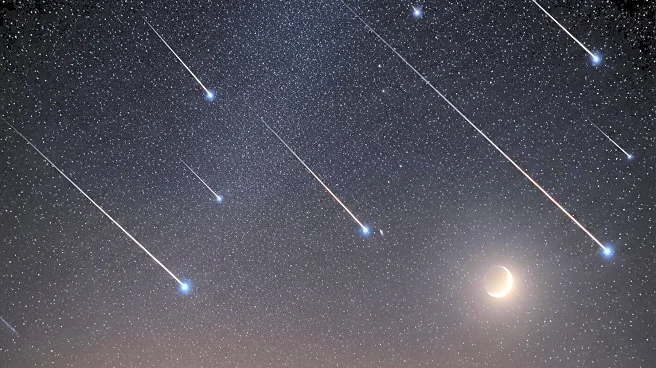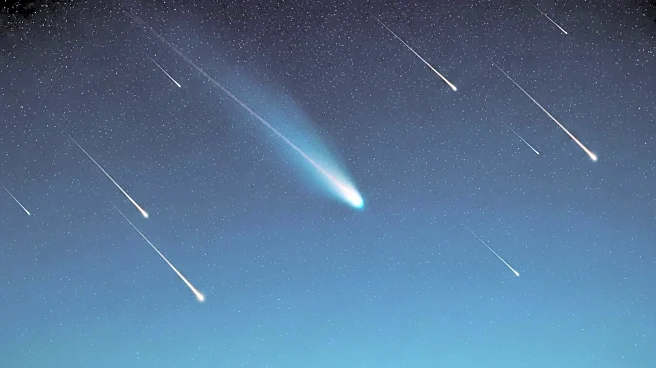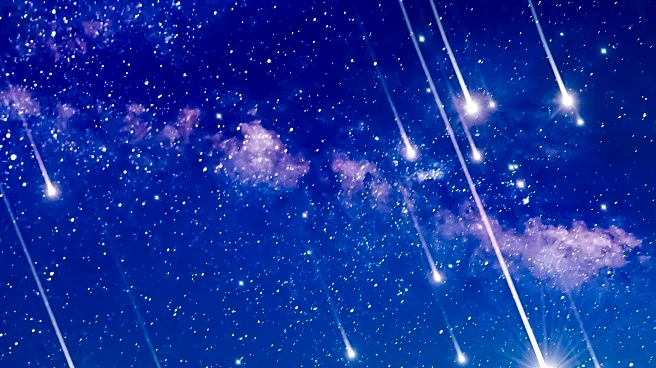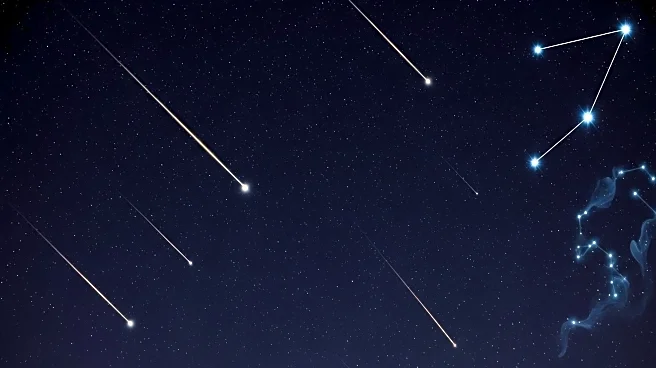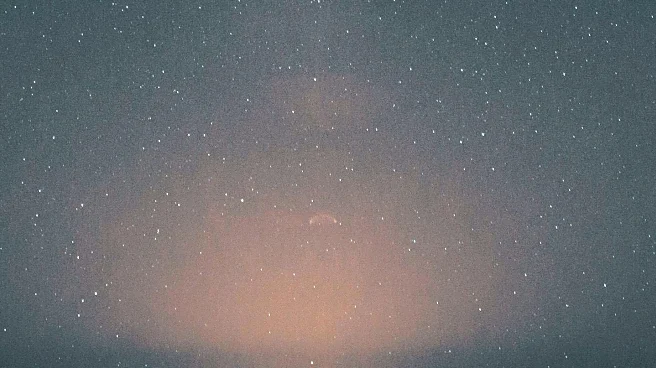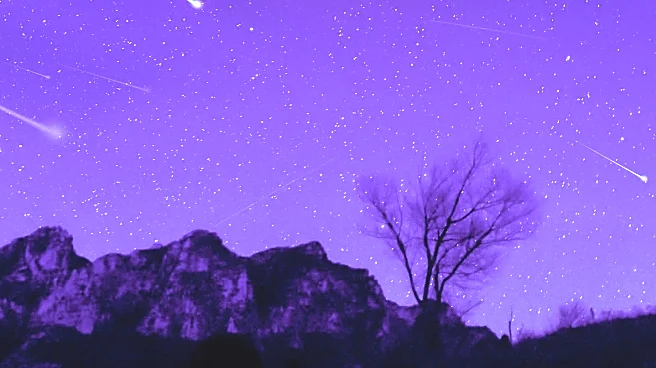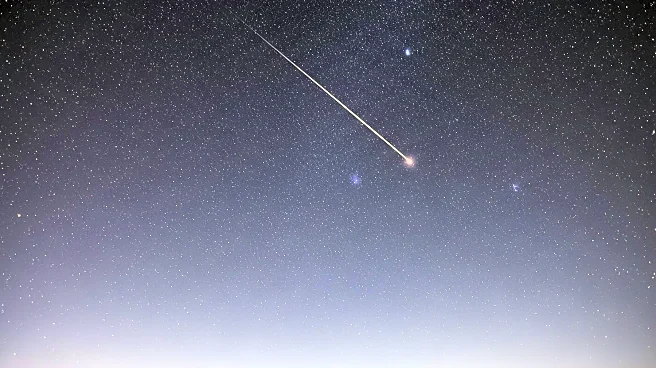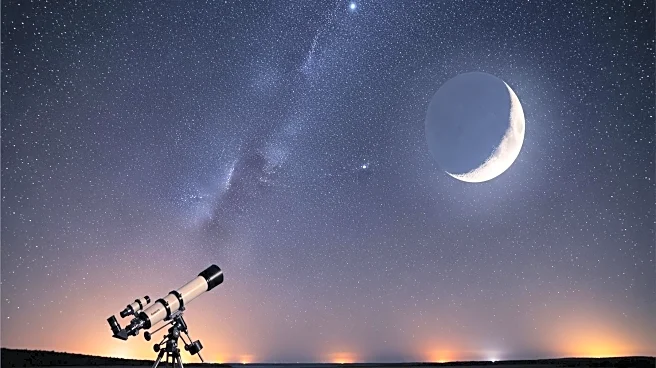What is the story about?
What's Happening?
The Orionid meteor shower is set to peak overnight on October 20-21, offering a dazzling display of meteors visible across the United States. This annual event occurs as Earth passes through debris left by Halley's Comet, resulting in meteors that travel at speeds of approximately 41 miles per second. During peak activity, observers can expect to see 10-20 meteors per hour, with the radiant located in the constellation Orion near the star Betelgeuse. The shower is known for its fast-moving meteors and glowing trails, which can linger for several seconds. This year, the shower will benefit from a moonless sky, enhancing visibility compared to previous years when moonlight obscured dimmer meteors.
Why It's Important?
The Orionid meteor shower provides a unique opportunity for stargazers and astronomy enthusiasts to witness a natural spectacle. The event highlights the ongoing interaction between Earth and cosmic debris, offering insights into the solar system's dynamics. For the public, it serves as an accessible way to engage with astronomy, potentially sparking interest in science and space exploration. The shower's visibility across the U.S. makes it a nationwide event, encouraging community gatherings and educational activities centered around astronomy.
What's Next?
As the peak approaches, individuals interested in viewing the meteor shower are advised to find locations away from city lights to maximize visibility. The best viewing times are in the predawn hours of October 21, when the radiant is high above the southern horizon. Stargazers should allow their eyes to adjust to the darkness for optimal viewing. Additionally, the event may inspire amateur photographers to capture the meteors, contributing to public interest and documentation of the shower.
Beyond the Headlines
The Orionid meteor shower underscores the importance of preserving dark skies, free from light pollution, to maintain the visibility of celestial events. It also highlights the cultural significance of stargazing as a shared human experience, fostering community and appreciation for the natural world. The event may prompt discussions on the impact of light pollution and the need for conservation efforts to protect night skies.
AI Generated Content
Do you find this article useful?
